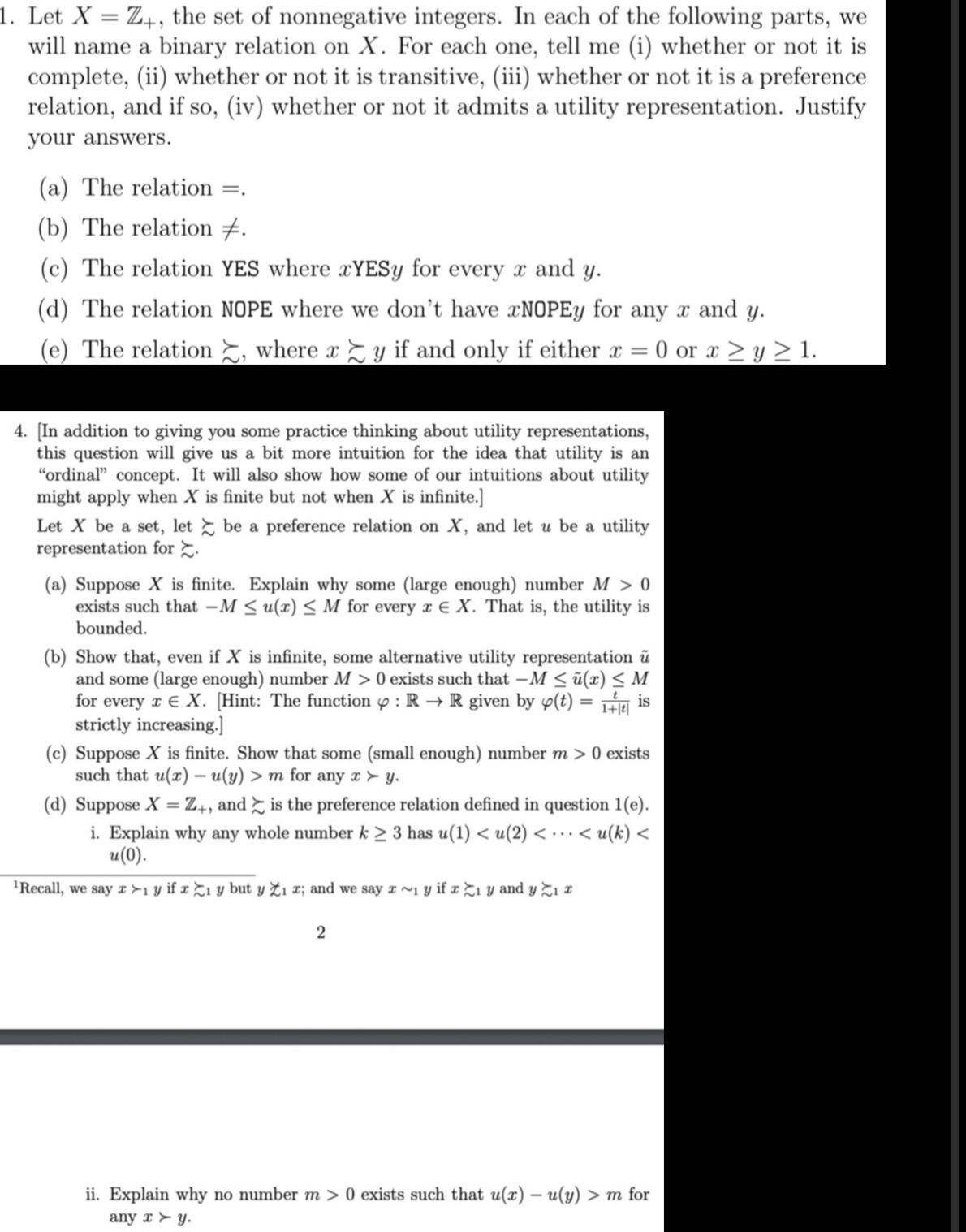Answered step by step
Verified Expert Solution
Question
1 Approved Answer
Need help with question 4d)See question 1e) for information needed to complete 4d), because it makes use of preference relation defined in 1e)Bear in mind
Need help with question 4d)See question 1e) for information needed to complete 4d), because it makes use of preference relation defined in 1e)Bear in mind Q4d has parts i and ii

Step by Step Solution
There are 3 Steps involved in it
Step: 1

Get Instant Access to Expert-Tailored Solutions
See step-by-step solutions with expert insights and AI powered tools for academic success
Step: 2

Step: 3

Ace Your Homework with AI
Get the answers you need in no time with our AI-driven, step-by-step assistance
Get Started


